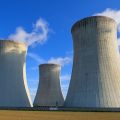PTE考生目前最大的问题之一就是练习题缺乏。除了有限的基本官方书(PLUS,Testbuilder, OG)之外,就没有题了。很多英语基础不是很扎实的同学很难找到练习材料。墨尔本文波雅思PTE培训学校专门为墨尔本,悉尼PTE考生准备了PTE练习的lecture 93篇。各位PTE同学可以练习阅读,练习记笔记技巧,可以练习复述,甚至可以练习describe image。废话少说,下面开始:
Now, you’ve been reading articles about the tremendous damage done to life and property by earthquakes. That’s why seismologists have been working so hard to develop methods of earthquake prediction. We can now predict earthquakes fairly well, but the predictions only locate potential areas of danger. They don’t predict the specific time and location at which an earthquake is likely to occur. Today I want to introduce to you three prediction models that have been developed. The first prediction model looks along earthquake faults, those cracks in the Earth’s crust, to find what are known as seismic gaps. Seismic gaps are places where the fault has shown little or no seismic activity for a long time. This theory postulates that such places are due for a major shock. The second model relies on phenomena, like ground flit. Using long cylindrical tubes containing water, observers noted that ground tilt tended to occur before major earthquakes. That led them to correctly predict the big Haicheng quake of 1975, the first successful earthquake prediction scientists have ever made. A million people were evacuated from that Chinese city before the earthquake struck. Unfortunately, this method hasn’t worked consistently, so we can’t say it’s been perfected. The third model is based on the theory that major earthquakes closely follow a series of minor ones. Starting with the measurements and timing of the smaller quakes, a complex formula calculates the “times of increased probability” of a much larger quake. Right now, this method, like the first method, cannot predict specific times and places, but that may change as it is further developed. For the moment, none of these models can predict with reasonable levels of confidence.
【生词摘录】
1. seismologist: n.[C]地震学家
2. prediction: n. [C]预测,预报
3. fault: n. [C]断层
4. crack: n. [C]裂缝
5. crust: n. [C]外壳
6. seismic: adj. 地震的
7. postulate: v. 假定
8. cylindrical: adj. 圆柱的
9. evacuate: v. 疏散
10. consistently: adv. 一贯地,一向,始终如一地
11. formula: n. 公式,规则





